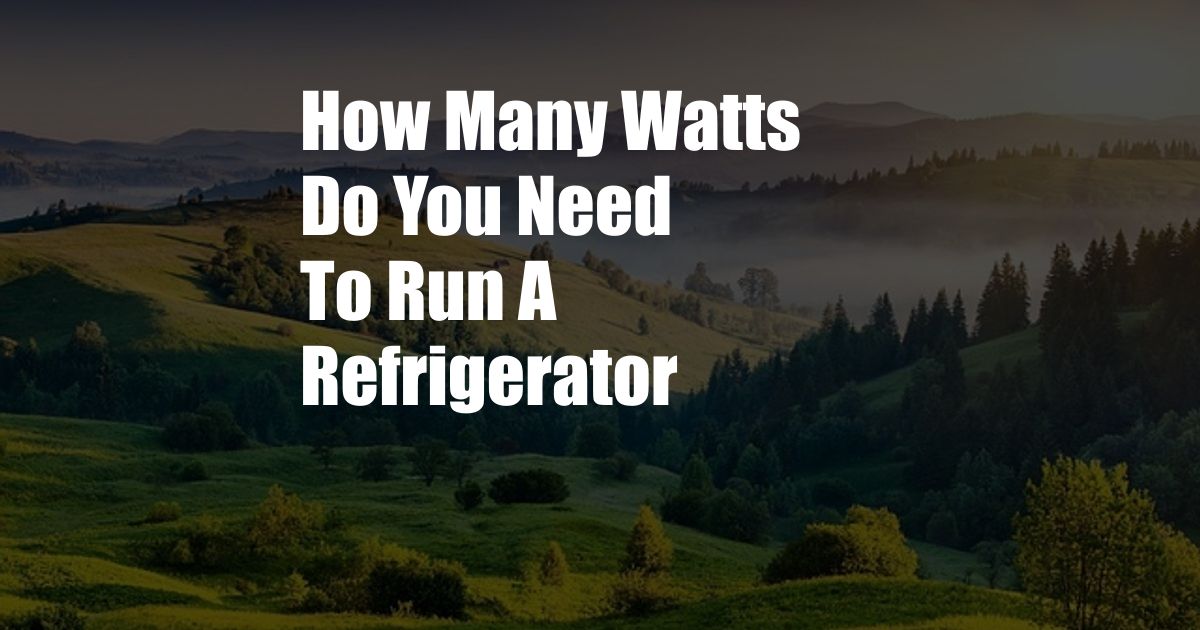
How Many Watts Does a Refrigerator Use?
A Chilling Revelation
In the sweltering summer heat, the comforting hum of my refrigerator serves as a constant reminder of its vital role in preserving our perishable treasures. As I effortlessly reach for a refreshing beverage, I can’t help but wonder – how much electricity does this indispensable appliance consume?
The Power Behind the Cold
A refrigerator’s energy consumption depends on various factors, including its size, age, and efficiency. To determine your refrigerator’s wattage, simply consult the user manual or look for a label affixed to the appliance’s interior or exterior. Typically, refrigerators with a capacity of 16-22 cubic feet use between 100 and 200 watts, while larger models with advanced features can exceed 300 watts. It’s worth noting that this wattage rating represents the maximum power consumption, which is typically reached when the compressor is running at full capacity.
The Compressor’s Contribution
The compressor, the heart of a refrigerator’s cooling system, plays a crucial role in determining energy usage. Modern refrigerators utilize highly efficient compressors that cycle on and off to maintain the desired temperature, significantly reducing overall power consumption. However, when the compressor is running, it can account for up to 70% of the refrigerator’s energy usage.
Energy Efficiency Standards
Over the years, government regulations have established minimum energy efficiency standards for refrigerators. The Energy Star label, a recognized symbol of energy efficiency, indicates that a refrigerator meets or exceeds these standards. Energy Star-certified refrigerators use significantly less energy than conventional models, saving you money on your energy bills and reducing your carbon footprint.
Tips for Reducing Refrigerator Energy Consumption
-
Choose an Energy Star-certified model: Look for the Energy Star label when purchasing a new refrigerator to ensure optimal energy efficiency.
-
Set the correct temperature: The ideal refrigerator temperature is between 37°F and 40°F, while the freezer should be set to 0°F. Avoid setting the temperatures too low as this will increase energy consumption.
-
Avoid overloading the refrigerator: Overcrowding the refrigerator can restrict airflow, forcing the compressor to work harder and consume more energy.
-
Defrost regularly: Frost buildup on the freezer evaporator coils can reduce cooling efficiency. Defrosting the freezer every few months will improve performance and reduce energy usage.
-
Clean the condenser coils: The condenser coils, located at the back or bottom of the refrigerator, help dissipate heat. Dirty coils can reduce cooling efficiency and increase energy consumption. Clean the coils regularly to maintain optimal performance.
Frequently Asked Questions
Q: How much electricity does a refrigerator use per day?
A: The daily electricity consumption of a refrigerator depends on its size and efficiency. On average, a 16-22 cubic foot refrigerator uses approximately 1-2 kilowatt-hours (kWh) of electricity per day.
Q: Can I unplug my refrigerator at night to save energy?
A: Unplugging your refrigerator at night will not significantly reduce energy consumption. The refrigerator will use more energy when it is plugged back in to cool down the contents again.
Conclusion
Understanding how many watts your refrigerator uses empowers you to make informed decisions about energy consumption. By following the tips outlined above, you can minimize the energy usage of your refrigerator, save money on your energy bills, and contribute to a more sustainable planet.
Are you interested in learning more about refrigerator energy efficiency? Let us know in the comments below!